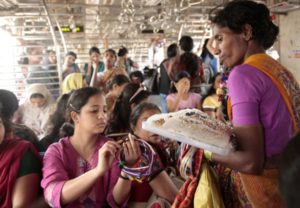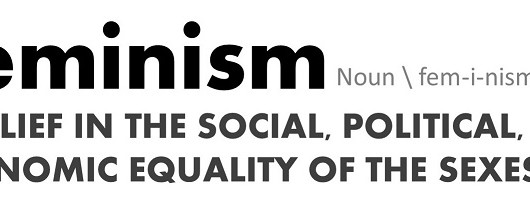The Train’veling’ Stories – Revealing cultures

Photo by: Tadeau-Jnr
The public transport system obviously reveals a lot about the city. Los Angeles has a terrible public transport system, almost non-existent. People who live there are also insulated, and try hard to be forthcoming. NY and Chicago on the other hand have well-connected public transport systems, and people are in each other’s faces, so forced to interact. So interaction becomes a characteristic of the city, although the nature of interaction depends on a lot of other factors.
Here, I am engaging with specifically two cities, both interactive, but quite unique in their interactions: Mumbai and Toronto. I am choosing them because of my familiarity with them, and also because of the similarity in their multi-cultural natures. I have heard as many languages in Toronto’s public transport, as in Mumbai’s. And the public transport systems are very central to these cities.
“Where are you from?”
Mumbai has an inclusive environment – most people interact with each other and include each other, irrespective of language, caste, class, region etc. “Where are you from?” is a rare question, because once you are physically there, nobody even thinks you are not from there. This is a double-edged sword, because people assume that you know how to live there, unless you specifically ask them. This is very clearly seen while using the train in Mumbai – you need skill to enter and exit in peak hours. A newbie in Mumbai, stands out and then somebody does ask the question – “Where are you from?”
Well, you rarely hear this on the subway in Toronto as well, but for different reasons. In Toronto – your accent or your skin color sometimes makes people ask the question, “Where are you from?” Although, it is interesting to note that Toronto has several English accents, just like in Mumbai and is not homogenized. So it is very common to come across people who have spent several years here with Irish, British, American, Chinese, Indian, Turkish, Iranian etc. accents in their English, and this is not treated as “abnormal” by majority of the people here. But there are some, who do.
And hence this question, “Where are you from?” becomes a loaded question in this part of the world, when white people who have lived here long enough, ask the non-whites who have also lived here long enough. And when non-whites, ask those rare white people, the same question, they stare at you in disbelief if they have forgotten that their previous generations also immigrated. But most new immigrants treat this as a “getting-to-know” question.
Train Stories
In Mumbai, people end up taking the same train everyday, to and fro, and great friendships, love stories are part of the commute. Most people know if you are not a regular and chat up with you. Sometimes the bond is just about holding your seat, you may not know anything more than that about the fellow commuter. But there are bonds that are easily formed. It is not uncommon to ask a fellow passenger to wake you up at so-and-so stop, if you are planning to sleep, and they will do it for you. Also, is the train is crowded, it is common to ask other passengers where they are getting off, and book your seat for the journey. Most of us have witnessed huge fights over this!

In Toronto, there is no need to book a seat, because usually, one eventually finds a place to sit – there aren’t as many people, as in Mumbai. New bonds are rarely formed, because people rarely talk to each other. They involve themselves in their phones or in their books. People offer their seat if you seem tired or are carrying heavy stuff and so on, but they aren’t commuting to make friends. It’s just a way to get from one place to another.
Gardi vs Crowd
Another thing that stands out as a difference is the way in which crowd is perceived. In Mumbai, everyone on the platform, waiting for the train, gets on it, even if it means sticking to each other on the train. Everyone knows that everyone else is hurrying to work or hurrying home, there is a lot of empathy, so a little inconvenience for another person getting to work or home, is perfectly acceptable. But Mumbai has been used to crowds for a while now, but Toronto is not.
So people do not squeeze in and make space for other commuters, in fact, if a Mumbaikar observes a Toronto train, they will see “space wasted”, in which at least five people could fit! People leave trains and wait for the next one, because of “crowd”.
Supporting characters
Food, jewelry, cloth vendors and musicians are a part of the commute in Mumbai. Regular commuters wait for the bhelwalis, chudiwalis etc. in their compartments! They have a bond too; if you buy regularly, you get the same product for less and so on. Most of us have heard popular Hindi songs on the trains and they are a part of our being. I think the song “Pardesi, Pardesi” and “Tum to tehre pardesi” have more association with the train than with their original singers! Vendors are not allowed on the TTC, but musicians in the subway stations are a common sight. You get to hear music from different cultures.

Mumbai’s commuters are easy with their backpacks, and they play music or play antakshari, cut vegetables, eat their dabbas, play cards, on the trains. Nobody minds and nobody cares. You sing or play music, that’s fine, I will also do what I want to do – that’s the general rule. If you put your bag on a seat next to you, your fellow commuter will tell you to move it politely, if they want to sit. They won’t be angry that you put your bag on a seat, because it is understood that when someone wants to sit, you will move it.
But in Toronto, there are signs that tell you to listen to your own music and signs that tell you to protect other people from your backpacks. The first one is acceptable, but not ideal, because you would get to listen to different kinds of music if this rule didn’t exist. But the second one is kind of ridiculous, because a backpack is designed to be on the back, so ideally people standing behind you must protect themselves from the backpack, unless the person carrying the backpack is moving violently – which is rare. Also, if you put your bag on a seat, people look at it as a crime and they are automatically angry, like you are taking their “right” to sit. It just goes to a very different level of interaction, through hate stares and fierce head shakes.
Here’s an article published last year, to promote “good” behaviour among Toronto commuters:
Efficiency
As far as efficiency is concerned, Mumbai beats Toronto hands down! People in Mumbai, adjust their watches with the trains, that’s how punctual they are! Weekends too are equally efficient, except harbor lines, which don’t function for a few hours for maintenance. But in Toronto, weekends are really inefficient. A particular part of the transit system is always under repair. So god save you if you are traveling to a suburb on the weekend, it takes nothing less than three hours!
For people traveling from the outskirts like Scarborough or Missisauga or Brampton, using the public transport, the time is sometimes variable. In Mumbai, traveling from one end of the city to the other end is usually done in the time specified, and rarely varies.
Miscellaneous
Expletives are usually used by people mentally ill, or the homeless in the subway. Sometimes people tend to get angry in Mumbai trains and very freely abuse each other! The next day they might end up being friends.
The emergency stop works in the subway and the authorities immediately show up. In Mumbai trains, the emergency chain isn’t completely reliable.
And yes, the subway stops for everyone – if you hurt yourself while entering it, if you puke, if you faint and so on. Sometimes, it stops for hours because a human being chose to sleep on the tracks! In Mumbai, the trains stop for no one and nothing!
Both cities have different kinds of acceptance of aberrations. In Mumbai, aberrations of emotional display such as anger, disgust, sorrow, are easily accepted. You don’t get slotted as a “certain kind” of person. But in Toronto, this doesn’t easily pass through. You are expected to have emotional control, although it’s not as stifling as in some parts of the US. You can justify your emotions with your “cultural” background. “Oh we Russians, we tend to shout a lot!” I heard someone say on the subway once. But if you are inebriated, then nobody expects you to “behave”! In Mumbai, if you are inebriated on public transport, everyone will avoid you like the plague, because you are expected to be out of control.
Mumbai has little tolerance for physical appearance aberrations – shorts, tight tops, tattoos, partially-shaved hair, orange hair color and so on. In Toronto, all of this goes unnoticed.
I don’t know what it is, but Mumbaikars as of now seem more accepting of regular human nature as compared to Torontonians. There is an eagerness to share, to know, to give and to accept, although there is an eagerness to compete as well. But in Toronto, there seems to be an unsaid code of “Stay in your zone”, and “Can’t trust you, till you prove otherwise”, definitely not extreme as in America, but it’s there. And sometimes that makes me miss the aunties cutting vegetables on the train, or the antaksharis or a fellow commuter asking, “What are you listening to?” after which you share your earphones and a few days later, you are in the commuter’s house eating lunch with their family!





